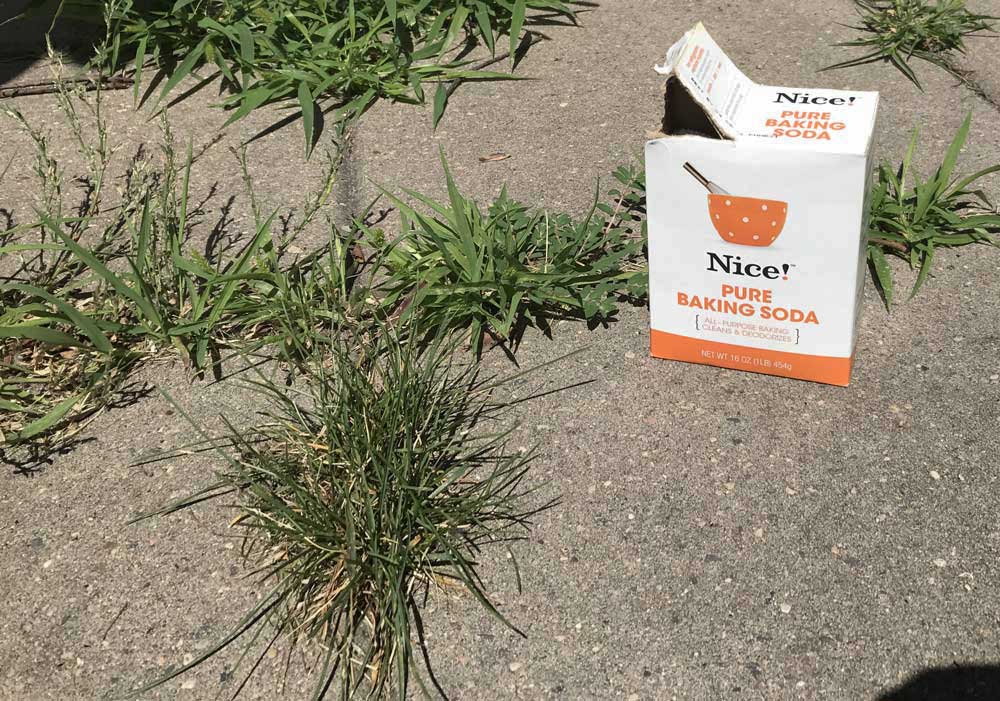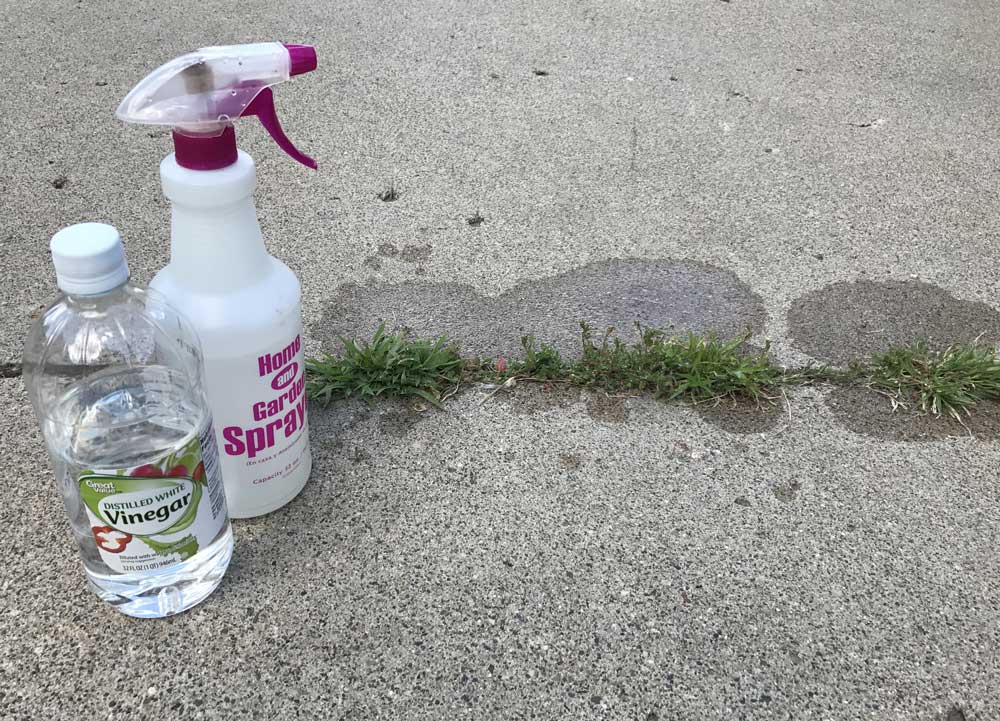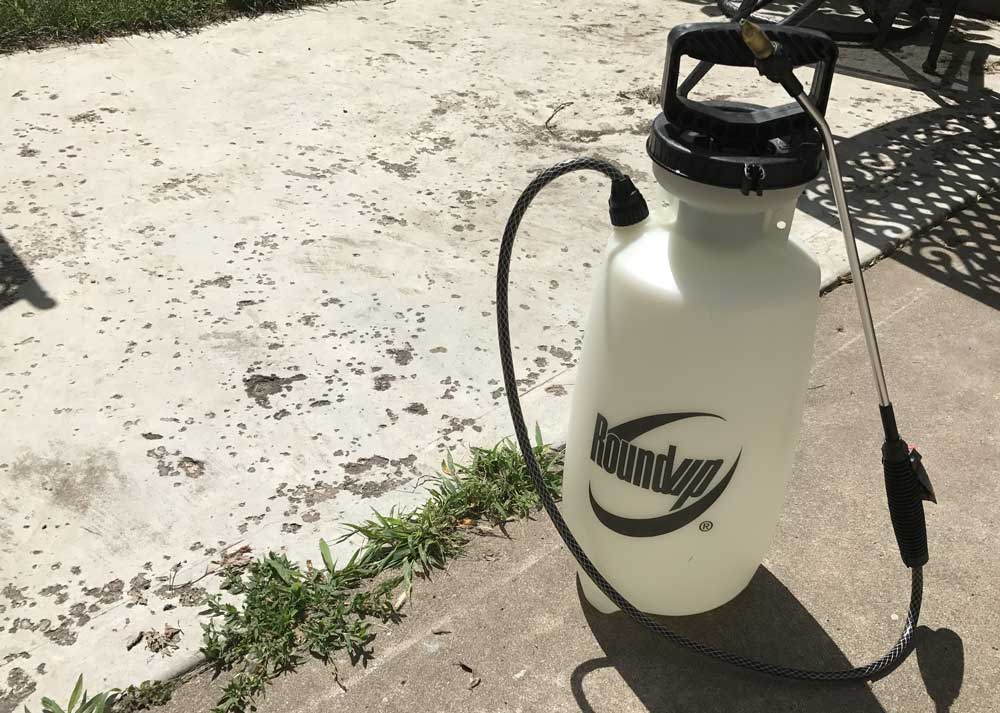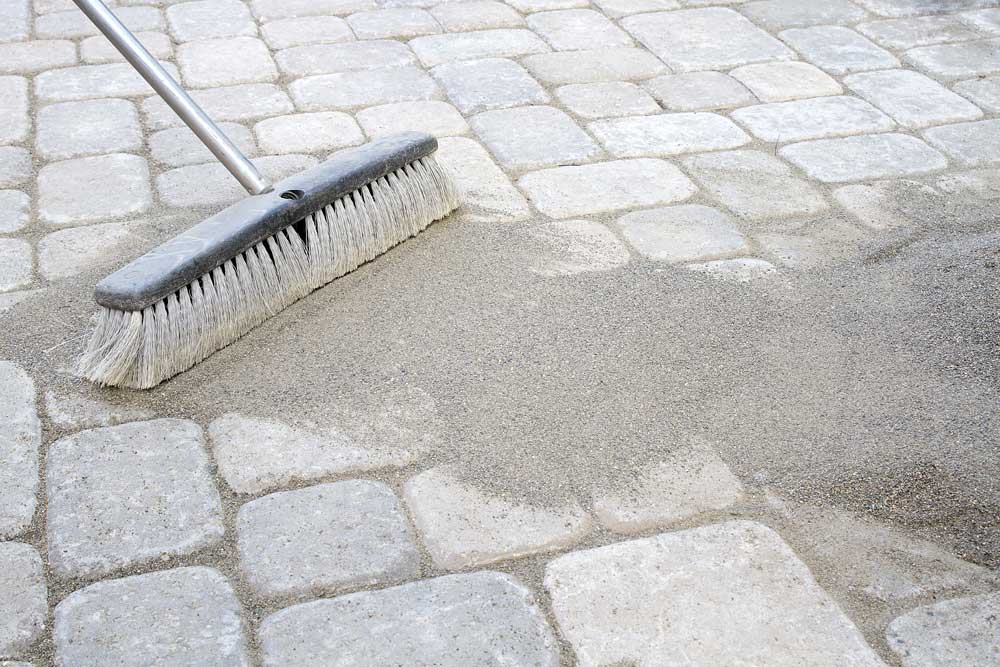How To Get Rid Of Weeds Between Interlocking Bricks
When installing or refreshing pavers, weed growth is something to think about. Getting rid of weeds on your patio tin seem like a pain considering they are experts at finding places to grow.
But don't worry, you're not caught against weeds and other invasive plants.
While the best way to become rid of weeds is to prevent them from growing in the start identify, there are several ways to remove those that have already started to grow on your pavers.
How to Get Rid of Weeds on a Paver Patio
Weeds can grow in fifty-fifty the smallest cracks in a patio if y'all don't take precautions to forbid them. When you properly install pavers, weeds have a difficult time growing upward through the spaces betwixt them.
Regularly sweeping and maintaining your paved patio will prevent seeds from settling betwixt the stones as well.
Whether y'all're putting downwardly new paving or refreshing former paving, there'south a ton of ways to deal with weeds growing between them. In one case y'all've already got a weed problem, information technology can exist difficult to take care of, just at that place are several means to resolve the problem in the beginning.
Let'south look at a couple of ways to prevent and go rid of weeds on a patio.
Method #1: Baking Soda
Simple household blistering soda may be all you need for your weed problems, especially if you lot desire to kill weeds growing most decorative plants you lot'd similar to keep. Baking soda is a natural production that volition not contaminate your property or landscaping and is safe for the surround.
Baking soda, or sodium bicarbonate, works past overloading the weed with salt, causing it to dry out all the mode to the roots and die.

To get rid of weeds with baking soda, moisten them with your garden hose and then sprinkle the soda on elevation of the entire weed.
To prevent weeds from growing in your paving, y'all can cascade baking soda all over the paved area and then sweep information technology into the cracks. Yous should re-apply every four to half dozen weeks. This method works the fastest during spring and fall but can still work during summer.
Method #ii: Vinegar
Vinegar, like baking soda, is a natural household product that is prophylactic to utilise as a weed killer. Vinegar has acetic acid, which draws the moisture out of plants causing them to die. Vinegar is extremely fast-acting and will result in chocolate-brown, withered weeds inside 24 hours.

Because vinegar is harmful to all plants, it should be applied using a spray bottle advertising overspray should exist controlled. For longer-lasting results, mix 1 gallon of white vinegar, 2 cups of table common salt, and 1 tsp of full-bodied dish soap and spray on all the weeds and cracks in the patio.
The high concentration of salt in this formula prevents them from growing dorsum.
Method #3: Salt
Salt is another natural product that you can use to kill weeds. Start by using a 3:one mixture of h2o and salt and apply to the area very carefully. Keep in mind that saltwater will also kill other plants, and then take care to apply it just to the weeds.
Like the blistering soda and vinegar methods, this is constructive since salt dries out the plants to the roots and has a lasting effect.
Method #4: Pressure Washing
For a low-cost solution, yous tin can pull the weeds by hand and then pressure level launder the pavers to get rid of roots. For this method to be effective, yous should e'er pull the largest weeds by paw because they're difficult to remove with a pressure washer.
Once the larger weeds are removed, pressure wash around the stones.
The goal is to remove debris and sand from the joints while not disturbing the bedding layer that the pavers are resting on. You'll demand to continue to practice this regularly to go along the weeds at bay.
Method #5: Chemical Treatments
You can use chemic herbicides to care for weeds on pavers as well, and there are two general types: pre-emergent and postal service-emergent. Pre-emergent herbicides piece of work on found seeds and seedlings, and they form a barrier to forbid formation.
Mail service-emergent herbicides work on actively growing weeds and are divided into two categories: selective and not-selective.

Selective herbicides can be practical to your whole patio because they target but weeds while having niggling to no effect on the surrounding grass. Non-selective herbicides will kill every blazon of plant that they touch, then you should simply use them in the heart of your paved surface area.
Preventing Weeds From Growing on a Paver Patio
At that place are several ways to forbid weeds from growing on your patio again. Baking soda, vinegar, and herbicides can all exist used to prevent them from growing back.
In one case they leech into the soil, weeds will take a difficult time growing. These methods need to be re-applied oft to work effectively.
Polymeric Sand
Y'all tin can also use polymeric sand to make full the joints betwixt pavers to lock the articulation together and prevent weed growth. Polymeric sand is non ordinary sand, it is a super-fine sand with additives like silica that form a binding agent when mixed with water to ameliorate seal cracks between pavers.

Polymeric sand besides improves the immovability of your patio, locking pavers together so that weeds can't find a place to abound. Considering information technology's bonded to itself and the pavers, polymeric sand resists erosion, protecting not only the pavers but too the base of operations materials.
Summate how much polymeric sand you need to prevent weeds on your patio.
While it's difficult to get rid of weeds on a patio once they've started to grow, you can prepare yourself up for success when you start install your pavers.
You tin can prevent them from fifty-fifty getting a foothold in your patio by using polymeric sand, natural products, or a chemical solution. Exist proactive and make your patio weed-free from day one!
Source: https://www.inchcalculator.com/get-rid-of-weeds-on-patio/
Posted by: andrewswitis1960.blogspot.com


0 Response to "How To Get Rid Of Weeds Between Interlocking Bricks"
Post a Comment